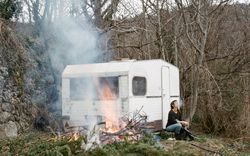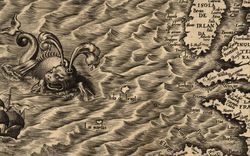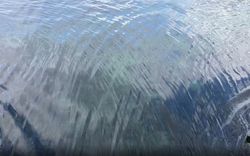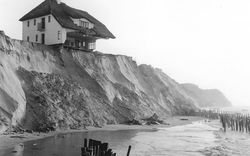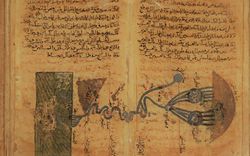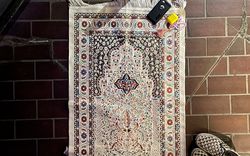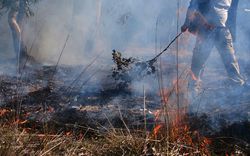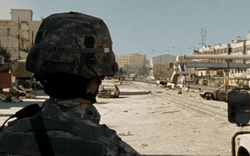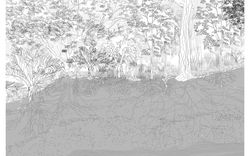Once upon a time, the Cévennes
A photographic essay by Sophie Bertrand
The Cévennes, a mountainous region in southern France, bears reflections of both major moments in French history and local traditions: the War of the Camisards in the early eighteenth century, during which Protestant peasants in the Cévennes challenged royal troops following the revocation of the Edict of Nantes; the Industrial Revolution in the nineteenth century, which brought almost a century of regional prosperity thanks to the exploitation of minerals such as charcoal, lead, and zinc; the Cévenole Resistance that used the undulating topography of the region to evade the German occupier during the Second World War; and the seasonal movements of livestock between pastures that have shaped the valleys for centuries. Traces of this history, sometimes visible and sometimes invisible, remain in the Cévennes.
In Once upon a time, the Cévennes, I probe how memories are transmitted and how commemorative connections between the history of a territory and a family heritage are conserved. The project has its roots in an incomplete biography, that of my maternal grandparents. I was concerned that their story might disappear, so I am trying to preserve bits and pieces of it. By digging into their archives and exploring the area where they lived, I’ve been able to produce a new visual archive directly linked to the territory. This fictional story, constructed from memories, photographs, and gathered archives, is put into dialogue with a portrayal of the new realities and identities of the Cévennes. The idea is to build bridges between past and present.
This work, in the form of a photographic essay, is inspired by the disparity in the photo album, which is arranged according to subjective histories based on documentation whose spatial and temporal signposts often leave behind little information. As living memories fade away, others arise in set narratives and new perspectives. So, this project defines the profound relationship between a territory, its history, and its natural elements, on the one hand, and collective memory and individual imagination, on the other, as a way of rethinking territory as a space to appropriate or reappropriate. Over time, as seasons pass, the stories of yesterday and today intermingle to create a new narrative. Far from painting an exhaustive portrait, this pilgrimage represents a lasting way to maintain a connection, both to family and to the region.
- 1
- Sophie Bertrand, view of the Cévennes from the château de Portes, 2015. © Sophie Bertrand
- 2
- Sophie Bertrand, site of a former lead mine, Montdardier, 2015. © Sophie Bertrand
- 3
- (Background) Sophie Bertrand, former boules pitch, La Grand-Combe, 2017. © Sophie Bertrand. (Foreground) Collage, silver halide photograph. © Lack/Bertrand Archives
- 4
- Sophie Bertrand, the farm road, Bessèges, 2015. © Sophie Bertrand
- 5
- Adolphe Lack and a friend, Bessèges, 1952. © Lack/Bertrand Archives
- 6
- Adolphe Lack and a friend, Bessèges, 1952. © Lack/Bertrand Archives
- 7
- (Left) “To the one I love for life,” 2 July 1941, Studio Leonar Legrano. (Right) Henriette Bouschet and friends, Bessèges region, n.d. © Lack/Bertrand Archives
- 8
- (Left) Sophie Bertrand, headquarters of the veterans of the wars of 1914–1918 and 1939–1945, Bessèges, 2013. © Sophie Bertrand. (Right) Archive (photograph), Cévennes, ca. 1942–1944. © Lack/Bertrand Archives
- 9
- Sophie Bertrand, view from the hamlet of Pratcoustal, Vigan region, 2016. © Sophie Bertrand
- 10
- Sophie Bertrand, dwelling, Vigan region, 2016 © Sophie Bertrand
- 11
- (Left) Cat, 1940. © Lack/Bertrand Archives. (Right) Sophie Bertrand, Région du Vigan, 2016. © Sophie Bertrand
- 12
- Sophie Bertrand, Pratcoustal, 2016. © Sophie Bertrand
- 13, 14, 15
- Sophie Bertrand, Pont d’Hérault, 2016. © Sophie Bertrand
- 16
- (Left) Vallée de la Cèze, n.d. © Lack/Bertrand Archives. (Right) Sophie Bertrant, Vallée de la Cèze, 2015. © Sophie Bertrand
- 17
- Sophie Bertrand, Saint-Laurent-le Minier, 2017. © Sophie Bertrand
- 18
- Vallée de la Cèze, n.d. © Lack/Bertrand Archives
- 19, 20
- Sophie Bertrand, Aulas, 2019. © Sophie Bertrand
- 21
- Sophie Bertrand, vue of the Cévennes, 2015. © Sophie Bertrand
This project received financial support from the Société de développement des entreprises culturelles du Québec, as part of its Programme d’aide aux artistes en arts visuels (2015).

